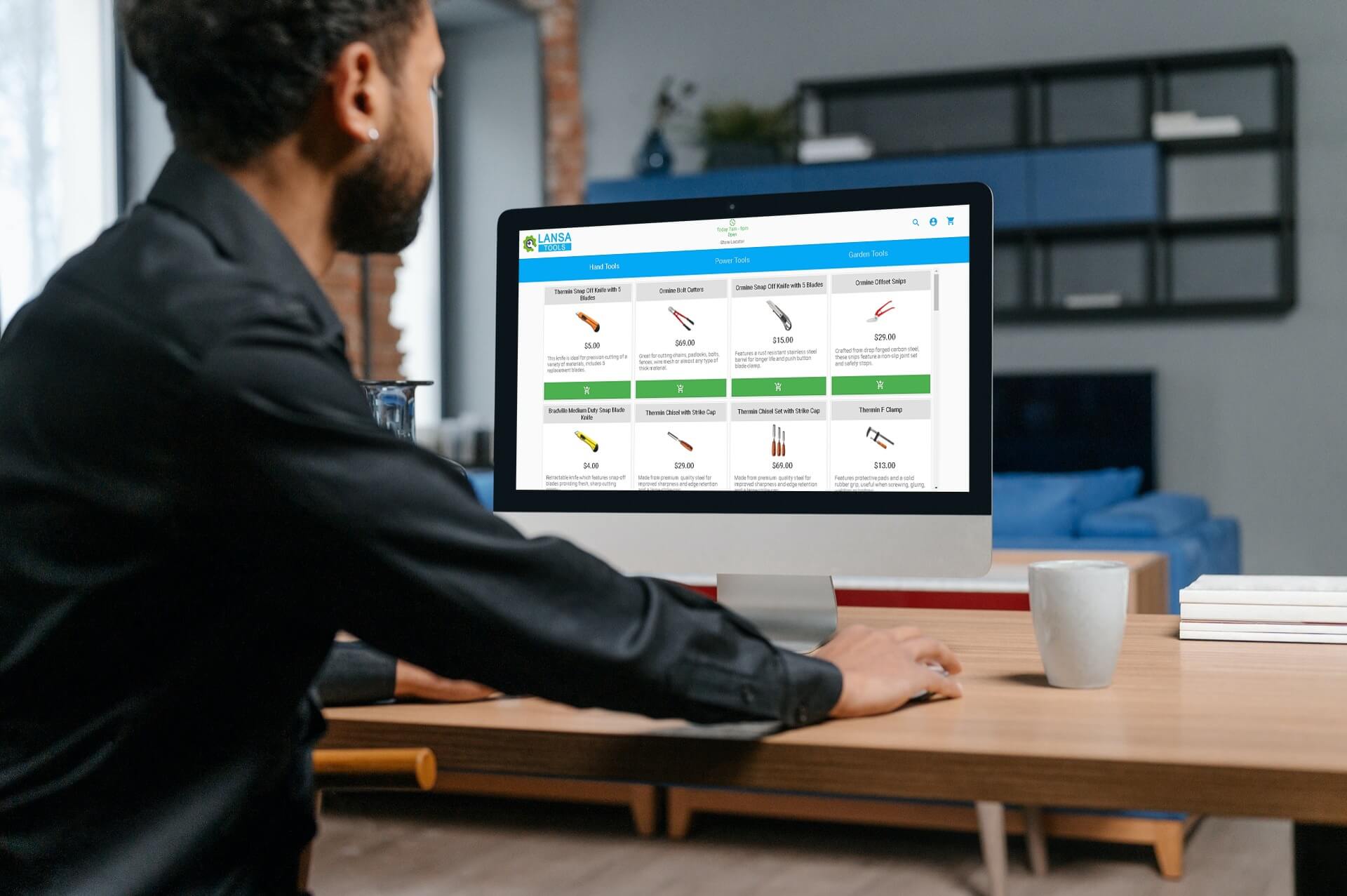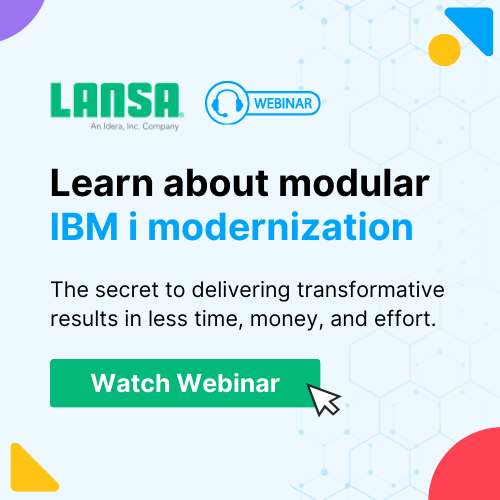Application modernization is more than just upgrading your existing applications. It has become a buzzword in the IT and software development industry, and, as a result, the term means different things to different people. From a business perspective, however, application modernization is about leveraging your existing tech investment to drive long-term goals.
There are two parts to the modernization process: First, you need to assess the viability of your existing systems and define the role they play in achieving your business goals. After that, you can develop a modernization strategy to address the problem areas you identify.
In this article, we’ll take a theoretical look at modernization. We’ll discuss different modernization approaches and consider their impact on the presentation, business, and data layers of your application. So let’s dive in.
What are the Common Application Modernization Approaches?
People often think of modernization as the process of revitalizing, transforming, or revamping applications. But, in general, it is not that simple. Effective modernization involves taking a holistic view of your current infrastructure and adapting your applications to improve your business processes and keep up with changing conditions.
There are different approaches to modernization and each approach has a different outcome. This is because they differ in purpose, cost, value, risk, and reward. To choose the best modernization strategy for your business, you need to identify your best modernization opportunities and then map them to the approach that solves your problem.
When you assess your options, bear in mind that no two companies are alike. You can’t choose a modernization approach simply because it worked for someone else. You need to consider how effective a strategy will be in terms of your own finances and resources. All in all, the best modernization approach for you is the one that minimizes your risks and leverages your existing investment.
Here are three common application modernization approaches:
Refacing
Refacing, also known as screen scraping, refers to converting legacy 5250 green screens to a modern graphical user interface. It is a good option when existing screens already offer decent functionality, but would benefit from increased usability and accessibility. IT leaders often resort to refacing when looking for quick wins and want buy-in from stakeholders for a more detailed modernization strategy.
The challenge with this approach is that the Return On Investment (ROI) is low. This is because refacing doesn’t add much business value beyond a better display. However, as you reface and add more functionality to your end-user tools that encourage productivity, you can boost your ROI.
Rehosting
Rehosting is also called “lifting and shifting.” It refers to moving your system to the cloud without making any change to its architecture. Organizations with high on-prem costs or those looking to move quickly often choose rehosting. Rehosting is also popular with companies whose applications don’t require continuous improvements or consist of commercial or off-the-shelf applications they don’t have to change or maintain.
However, rehosting doesn’t offer many real benefits in the current economy where businesses must innovate to survive. This is because innovation requires developing new features or internal solutions at pace. In addition, rehosting without making changes offers limited value. It’s just moving to the cloud and forfeiting the existing benefits of your existing IBM i hardware architecture. You would also need to web-enable or reface your 5250 green screens for cloud connectivity.
Re-Architecting
Re-architecting, or refactoring, involves converting your legacy code to a more current language like Java to make it more compatible with the cloud. Organizations that take on this approach often do so to make their applications cloud-native and enjoy perks like agility and speed.
However, there’s a caveat. While this option might address some immediate issues, it is not fit for the long run. This is because the new code just isn’t as good as the original code. Simply put, the RPG procedural programming paradigm does not translate well into an Object-Oriented paradigm. As a result, the re-architected code won’t perform efficiently and would need tedious maintenance.
Even if you can afford the maintenance, you may have difficulty web-enabling web-enabling your applications or adding necessary new functionality. Do you have the time to learn new languages and frameworks? More importantly, do you have the resources to hire and onboard new developers with the right skills?
Have an AS400? Check out our handy AS400 Application Modernization guide.
What are the Possible Modernization Areas?
Application modernization has a wide influence on the following areas in your business infrastructure:
Integration
In a constantly changing technological environment, businesses must incorporate modern applications or technologies to keep up. To do this, you need to access data from your legacy applications. In other words, your existing applications must share data with your modern solutions. Modernization plays a crucial role here.
Most legacy applications hoard their data. They create siloed systems that require manual intervention to access data. For this reason, you need to modernize your legacy applications as well as the way they interact with other applications.
Database
Legacy applications are often tightly coupled with their database. This means that only the application knows its data access process. Where it’s practical, modernization involves separating a legacy application from the database. That degree of separation depends on the modernization technique you use.
Data locked in legacy applications is unavailable for use in business intelligence applications. This is because analyzing and aggregating that data is difficult. As a result, your company may be missing insights into business trends that are apparent in data you can’t use.
People
Modernization also involves giving employees and developers the right tools and architectures to excel. But embarking on an application modernization journey means implementing new technologies which require everyone to upgrade their skills. This means formal training and hands-on experience as well as mentoring.
A modernization project is an opportunity to onboard employees to new technologies or development tools and also educate them on the latest standards and business processes that can help you achieve long-term business objectives.
What Comprises the Architecture of an Application?
An application consists of multiple component levels. These include the source code, the business logic, the data access processing, the database, and other data sources. Modernization can affect the entire structure or a component level, depending on your business needs. To fully understand the architecture of an application, let’s look at the three application layers:
Presentation Layer
Simply put, the presentation layer of an application is the user interface you interact with when you use an application. Modernizing this layer involves ditching your 5250 green screens for a modern user interface, like any modern web application. The advantage of modernizing your application’s presentation layer is:
- Your application is now accessible to modern users who expect graphical user interfaces.
- You get to maintain your legacy application’s backend. This is particularly useful when you don’t have the source code of your legacy applications, which is often the case with businesses that have been around for decades.
However, a better presentation doesn’t automatically transform your legacy applications into modern applications. Depending on your problem areas and business needs, however, modernizing this layer alone might suffice.
Business Layer
The business layer is responsible for your computational business activities. These include your algorithms and data validation. It’s the layer where applications calculate discounts and apply business rules, checking that the customer name isn’t blank, for example.
Modernization at this layer has more to do with the business process than presentation. At its core, it involves restructuring source code and turning application functions into services. In other words, business rules are extracted into a separate business rules engine. This unlocks legacy applications by making the business logic accessible to both existing and modern applications.
In addition, creating web services from legacy application functions allows other applications to use their business processing. Restructuring the business layer helps to separate a legacy application’s presentation and data layers.
This modernization stage is useful for businesses looking to migrate, rewrite, or replace an application.
Data Layer
The data layer consists of the database, data access, and data processing. For legacy applications, the database is locked within the application — only one application has access. Modernizing this layer requires separating the database from the culture and incorporating data access mechanisms that give other applications access.
Modernizing your data layer allows you to better integrate with modern technologies, business intelligence applications in particular. Data Layer modernization is useful for organizations looking to turn applications into services and migrate, rewrite, or replace legacy applications.
Are You Ready to Modernize Your IBM i Applications?
IBM i applications remain vital to the business operations of many enterprises today. However, evolving customer expectations, new technology entrants, and changing market conditions put IBM i applications under increasing pressure. Therefore, IBM i users must have an application modernization strategy to better position them to adapt to these changes.
For more information on application modernization, check out the Application Modernization ebook . You can also contact us to speak to an expert.










